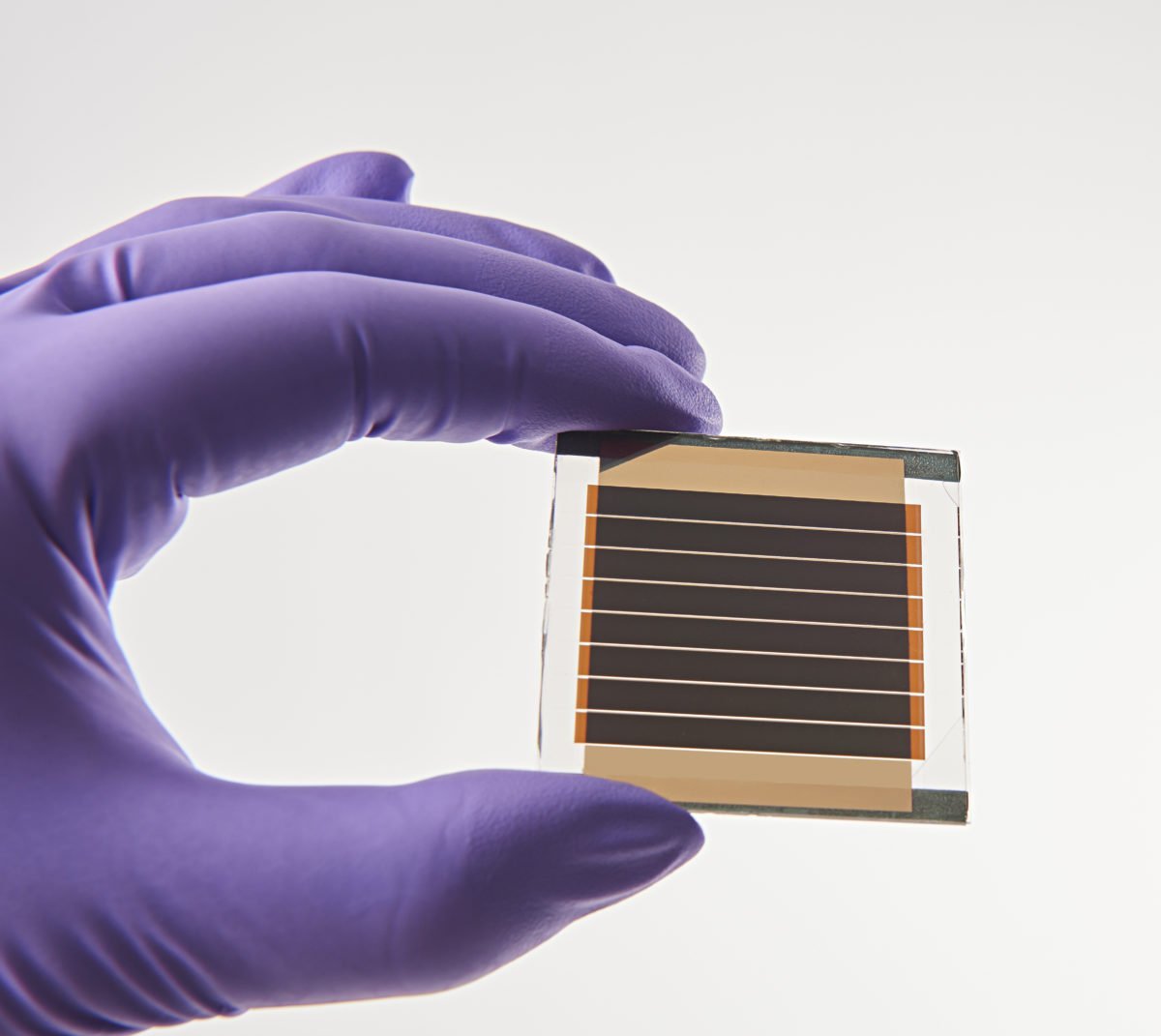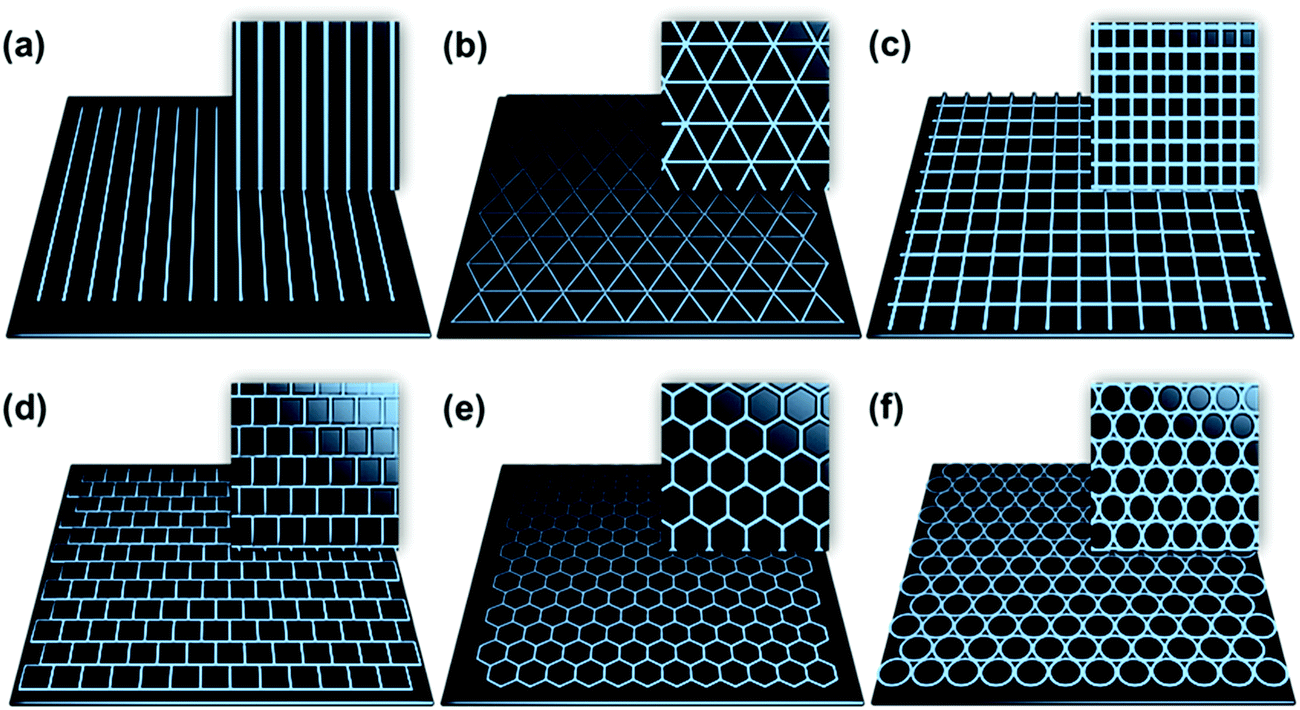
Research Blogs

Estimation of Charge Carrier Mobility in Solar Cells: An Introduction to CELIV
Dive into the world of mobility in solar cells, and explore how CELIV measurements help determine charge carrier mobility in thin-film solar cells like perovskite and organic solar cells. Learn about various CELIV techniques and their applications in this comprehensive research blog.

Perovskite Solar Cell Upscaling Prediction
The monolithic module design is a suitable solution to upscale the lateral dimensions of perovskite solar cells. The device's active area is divided into smaller cells with an interconnection gap. The narrower the subcell, the lower the resistance of each subcell with consequent improvement of the FF. However, the interconnecting gap between each subcell is an inactive area, that reduces the total efficiency of the module. The interconnection is composed of lines P1, P2, and P3, which respectively separate the TCO, the photoactive layer, and the top contact between consecutive subcells.
We used the simulation software Laoss to optimize a perovskite photovoltaic minimodule. This procedure can replace the standard experimental trial-and-error approach that is commonly used to upscale perovskite solar cells.

Current Losses Caused by Mobile Ions in Perovskite Solar Cells
The presence of ions limits the charge extraction in perovskite solar cells, causing current losses. We used drift-diffusion simulation to validate this hypothesis and propose solutions to limit their influence – hence optimizing the power conversion efficiency (PCE).

Quantification of trap states by thermally stimulated current in thin film solar cells
The performance of light-emitting (LEDs) and photovoltaic (PV) devices depends on the quality of the photoactive semiconductor material. The unintentional introduction of defects in the semiconductor material due to material impurities or during the fabrication process causes the deviation from optimal performance.
These defects are referred to as trap states, or in short “traps”, which are energetic states within the bandgap of a semiconductor. In general, traps can occur due to material impurities (in the bulk) or at the interfaces between layers of different materials.
In the following blog post, we will present how to characterize the trap states with the technique called thermally stimulated current (TSC). We also propose a method to reliably interpret the TSC results based on drift-diffusion simulations.

ISOS protocols for stability analyses of Perovskite Solar Cells
How do we perform aging experiments that are tailored to emerging PVs? This blog post summarizes the crucial guidelines that have been proposed by the community working on Perovskite Solar Cells (PSCs) to properly assess the stability of PSCs. These guidelines have been added to the existing indications provided by the ISOS protocols developed for Organic Solar Cells.

Grid Optimization for Maximum Power Output of Large-area Organic Solar Cells
It is challenging to increase the device area of optoelectronic devices based on perovskite and organic materials without losing performance. One of the key issues is the high sheet resistance (Rs) of the transparent conductive oxide (TCO). Combining the TCO with a metallic grid reduces the ohmic losses, but what is the grid geometry that maximizes performance?
In this tutorial, we will show you, how to use the simulation software Laoss and its optimization feature to quickly find the grid geometrical features for maximum power output.

Impact of Photon Recycling on the Efficiency of Light Extraction in Metal Halide Perovskite Light Emitting Diodes
We introduced a theoretical treatment of photon emission and recycling in optoelectronic semiconductor devices that is free of non-physical divergencies. Here, we now show the application of this framework to the assessment of the impact of PR on the light extraction efficiency in perovskite LEDs. This treatment goes from the analysis of contributing photonic modes in single emitter slab configurations to the evaluation of the external LED quantum efficiency in realistic device stacks.

Fitting routine for a reliable transient photoluminescence simulation of perovskite films
Transient photoluminescence (trPL) characterization experiments allow to analysis charge carrier dynamics and identify the recombination channels of the device structure under investigation.
Useful information that can be extracted includes the quantification of radiative and non-radiative lifetimes, charge carrier extraction from differential lifetime computation, and the influence of the interfaces on the recombination mechanism. Fitting the experimental results with simulations further supports the analysis of the obtained data. However, qualitatively comparable fittings can be obtained with different sets of simulation parameters.
Using the fully-coupled, 1-dimensional optoelectronic simulation software Setfos, the trPL signal of a simple glass/perovskite structure was simulated and a routine is suggested to ascertain the reliability of the results. This routine is based on experimentally measured material properties and the analysis of the band diagram evolution during the photoluminescence transient. The validity of the simulated trPL is also recursively verified by fitting the decay with a bi-exponential function to extract the lifetimes of the recombination mechanisms.

How to quantify Non-radiative voltage losses and recombination in solar cells
The open-circuit voltage (Voc) is the electrical potential difference between the two terminals of a solar cell, when there is no external load applied, hence no electric current flows. Correspondingly, this means that, when a voltage equivalent to the Voc is applied to the terminals of the solar cell, the recombination current (Jrec, which typically follows a non-ideal diode equation) and the photocurrent (Jph, the current generated by illuminating the solar cell) are equal, hence the net current is zero (Jrec=Jph at V= Voc).
Solar cells often present also non-radiative recombination mechanisms, in addition to the radiative one, as a result of poor material quality and non-idealities. To increase the Voc and thus potentially the power conversion efficiency, it is necessary to minimize the ΔVoc,nrad. It is, therefore, necessary to quantify the total loss and determine its origin.
Electroluminescence (EL) and photoluminescence quantum yield (PLQY) allow to directly extract the ΔVoc,nrad for thin-film solar cells such as perovskite solar cells, kesterite, perovskite, organic, or quantum dot. solar cells.
After quantifying the losses, the combination of capacitance-voltage (CV), temperature-dependent voltage characteristics (JV-T), and capacitance-frequency (Cf-T) measurements are essential to identify the recombination mechanisms.

How to reduce loss channels and defects in large-area organic solar cells
Our 2D + 1D software LAOSS is a perfect tool to understand and improve on different upscaling strategies which combine 1D layer stack with 2D lateral simulations. In this blog post, we will discuss the findings by Matthias Diethelm and his colleagues who used LAOSS to simulate centimeter-sized organic solar cells to understand loss channels and macroscopic defects.

Why Perovskite Solar cells with High Efficiency Show Small iV-curve Hysteresis
In many perovskite solar cells, hysteresis is observed between the forward and reverse current-voltage (IV) scans. This IV curve hysteresis can be problematic for the correct determination of the Power Conversion Efficiency (PCE). While the exact origin of the IV curve hysteresis has remained a topic of debate, it is now widely accepted that mobile ions are the principal cause. However, it is still the subject of ongoing debates about how exactly mobile ions influence the device operation.
In this blog, we are showing how a proper drift-diffusion simulation can help in understanding how mobile ions are affecting the JV characteristics of a perovskite solar cell.

Analysis of TADF OLED degradation by combining advanced characterization and simulation
Despite the success of OLED displays in commercial products, there are still issues regarding the efficiency and lifetime of these devices. It is of utmost importance to better understand the device physics in general and the origins of degradation in these OLEDs.
In this blog post, we show you an example for which we used our tools Paios and Setfos to understand device limitations and analyze the degradation mechanisms in state-of-the-art sky blue TADF OLED devices.
Increase the efficiency of a Perovskite-Silicon Tandem Solar Cell with a Full Electro-Optical Simulation
The emerging solar cell technology of perovskite solar cells already reach an efficiency of 25.5%. The advantage of perovskite solar cells is that they absorb light better in the visible part of the spectrum whereas silicon-based solar cells can absorb near-infrared photons as well. This means that by combining these two technologies in tandem multi-junction solar cells, it will be possible to absorb light over a wide range of the spectrum very efficiently. Theoretically, efficiencies up to almost 40% are expected to be possible.
In this blog post, we will show how SETFOS can be used to analyze a tandem solar cell optically as well as electrically. This simulation approach reveals bottlenecks in the optimization and shows pathways for improvement. This study has been presented at the EUPVSEC 2020 by Urs Aeberhard.

Numerical Optimization of Organic and Hybrid Multijunction and Tandem Solar Cells
We present a numerical optimization of organic and hybrid multijunction solar cell devices , using an integrated optoelectronic device simulation approach that captures the essential properties of the complex multilayer structures, such as, light scattering at both macroscopic and rough thin film textures, resonator effects in coherent stacks, and the impact of organic interface properties for the design of efficient recombination layers . The optimization capabilities of the numerical device simulation framework are illustrated in the examples of textured perovskite silicon and all organic tandem solar cells.
